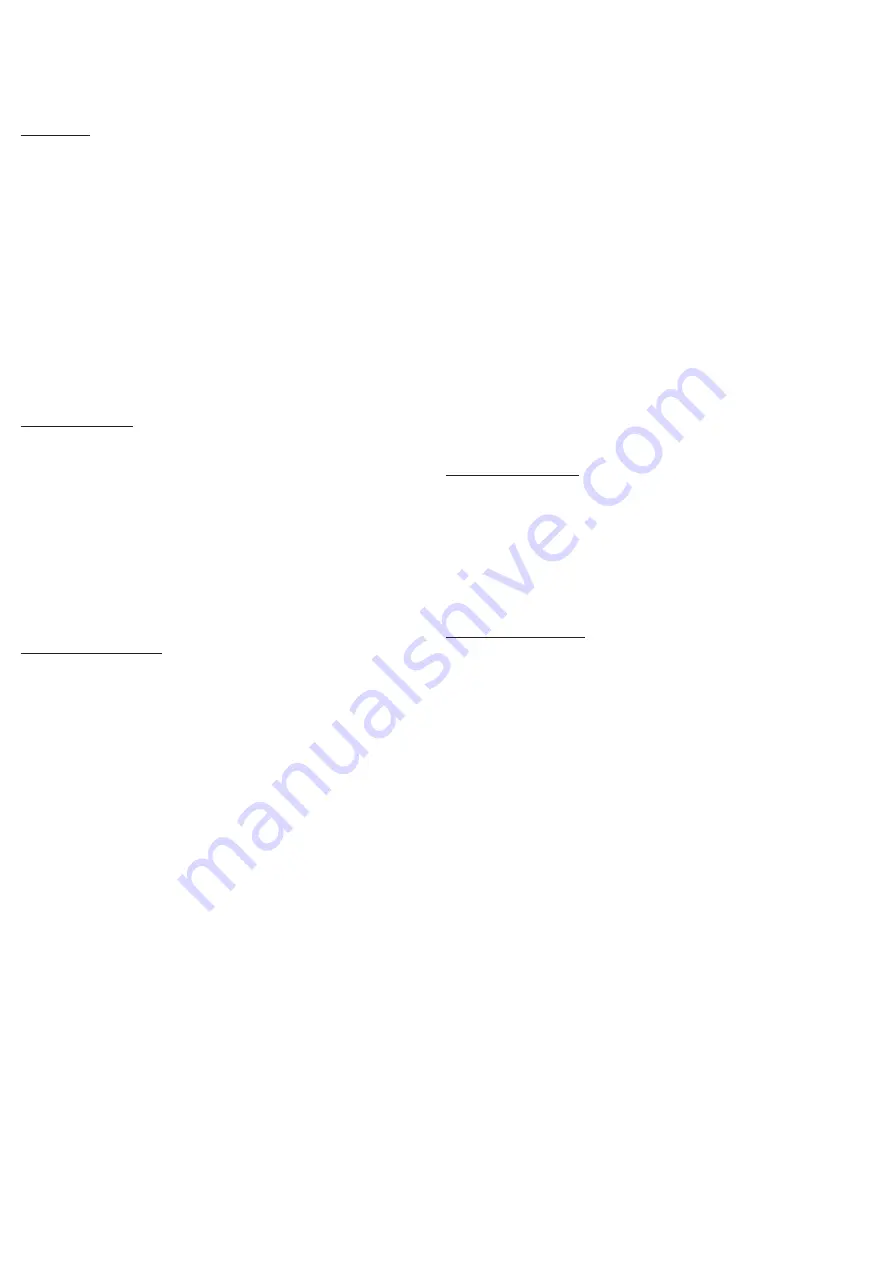
17
Repairs to the platform should be performed by a qualified professional
in accordance with the manufacturer’s instructions. A qualified person has
the necessary knowledge to carry out repairs or maintenance after being
trained (by the manufacturer, an external organisation, etc.)
7.1 Cleaning
The platform, especially the moving parts, must be cleaned immediately
after use if there is any visible dirt.
Cleaning is done using water to which a usual cleaning product is added.
Cleaning products must not penetrate into the soil.
Dispose of used cleaning fluids in accordance with applicable environmental
protection guidelines.
Lubricate all moving parts with ordinary oil. Use a low viscosity oil for use
in winter.
Dispose of oil-soaked rags in accordance with applicable environmental
protection guidelines.
WARNING
Danger of falling due to slippery surfaces! The presence of lubricating oils
and fluids on the bearing surfaces can cause falls and injuries.
Wipe off excess oil.
Remove impurities (fresh paint, snow, etc.).
7.2 Professional use
When using the ladder platform for professional purposes, regular and
recurring functional inspections must be carried out by a qualified person
(visual and functional checks).
The type and extent of the inspections, as well as their frequency, must be
defined. The frequency of the inspectionsis determined by the conditions
of use, in particular the frequency of use and the stress on the ladder,
as well as the frequency of occurrence and severity of the defects found
during previous inspections.
It is the responsibility of the operator to ensure that damaged platforms are
removed and stored until they are refurbished or disposed of, ensuring that
they can no longer be used.
A sample inspection form is available on the manufacturer’s website.
7.3 Recurring inspections
The operational safety of the platform must be regularly inspected by a
competent person.
The competent person must be authorised by the operator to carry out the
inspections (ensuring that applicable laws are followed).
The frequency of the inspections must be adapted to the operating
conditions. Under no circumstances may it exceed 1 year.
The process of the inspection must be documented. Checklists to use when
inspecting platforms are available on the manufacturer’s website or from
your distributor.
If any of the checkpoints are not completely satisfactory, the platform should
not be used. Never use damaged or incomplete products or components.
The inspections below are not exhaustive, additional checks can be
performed according to the conditions of use or the identified risk.
GENERAL
Check your platform in its entirety, that it does not show any trace of dirt,
e.g.: mud, paint, grease.
Check that all components are present and functioning properly.
Frame / Feet
Make sure there is no distortion, warping, twisting or cracking.
Make sure there is no crushing, damage, sharp edges, corrosion, chips,
burring or wear.
Check the condition of the attachment points for other components.
Make sure that the various elements are present and properly attached.
Protection from opening
Check for deformation, crushing, cracks, and proper operation of locking
devices.
Check for damage and corrosion.
Fittings and joints
Check for damage, cracks, deformation and corrosion.
Check for wear and tear and the working condition.
Make sure that the various elements are present and properly attached.
For telescopic models: Check the locking system for proper functioning,
good working order, no deformation, no cracks and no corrosion.
Rungs, steps, foot pieces, platform and shelf
Check for missing, unstable, excessively worn, corroded or damaged
rungs or steps.
Check for deformation and cracks.
Make sure there is no crushing, damage, sharp edges, chips, burring
or wear.
Check that the elements are correctly attached to the frame.
Check that protective devices are not worn and are in good working
order (e.g. locking systems, rung hooks).
Ladder feet, casters
Check for damage and corrosion.
Check for wear and tear and the working condition.
Make sure that the various elements are present and properly attached.
Marking
Check that the marking is legible and ensure that it is not damaged.
Accessories
Make sure that all the accessories are present and properly attached.
Impurities and dirt
Make sure there are no impurities such as paint, dirt, grease or oil.
8 Transport and storage
• Store ladders in such a way as to prevent them from being damaged
(e.g., bent or warped).
• Store ladders in such a way as to protect them from the weather,
direct sunlight and unauthorised use (e.g. by children).
• During transport to or from the storage place, use a system to protect
against slipping, bumping and falling.
• Do not throw ladders during loading operations.
• Securely fasten ladders for transport on a roof rack or in a vehicle.
9 Packaging and disposal
• Risk of choking on the packaging. Dispose of packaging materials in
accordance with applicable regulations.
• Dispose of the platforms and their components in accordance with
local laws and regulations.
Summary of Contents for NF P 93-352
Page 2: ...2 ...
Page 4: ...4 ...
Page 5: ...5 ...
Page 6: ...6 ...
Page 7: ...7 ...
Page 8: ...8 ...
Page 9: ...9 ...
Page 10: ...10 ...
Page 11: ...11 ...
Page 12: ...12 ...
Page 15: ...15 ...
Page 18: ...18 ...
Page 21: ...21 ...
Page 24: ...24 ...
Page 27: ...27 ...
Page 31: ...31 ...
Page 34: ...34 ...
Page 35: ...35 ...
Page 36: ...36 CDH GROUP 979 avenue de la Gare 27610 ROMILLY SUR ANDELLE ...










































